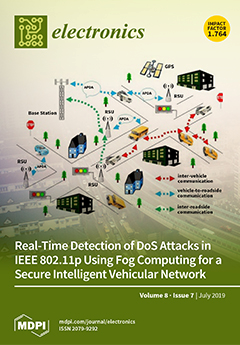To furnish the network with small cells, it is vital to consider parameters like cell size, interference in the network, and deployment strategies to maximize the network’s performance gains expected from small cells. With a small cell network, it is critical to analyze
[...] Read more.
To furnish the network with small cells, it is vital to consider parameters like cell size, interference in the network, and deployment strategies to maximize the network’s performance gains expected from small cells. With a small cell network, it is critical to analyze the impact of the uplink power control parameters on the network’s performance. In particular, the maximum transmit power (
Pmax) for user equipment (UE) needs to be revisited for small cells, since it is a major contributor towards interference. In this work, the network performance was evaluated for different
Pmax values for the small cell uplink. Various deployment scenarios for furnishing the existing macro layer in LTE networks with small cells were considered. The
Pmax limit for a small cell uplink was evaluated for both homogenous small cell and heterogeneous networks (HetNet). The numerical results showed that it would be appropriate to adopt
Pmax = 18 dBm in uniformly distributed small cells rather than
Pmax = 23 dBm, as in macro environments. The choice of
Pmax = 18 dBm was further validated for three HetNet deployment scenarios. A decrease of 0.52 dBm and an increase of 0.03 dBm and 3.29 dBm in the proposed
Pmax = 18 dBm were observed for the three HetNet deployments, respectively. Furthermore, we propose that the fractional power control mode can be employed instead of the full compensation mode in small cell uplinks.
Full article





